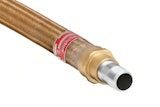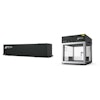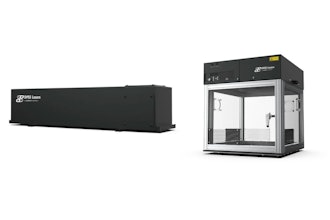Mobility, social collaboration, the cloud and big data are among just a few of the hot technology trends poised to transform the manufacturing supply chain and introduce new levels of collaboration.
However, figuring out your mobile strategy or what technologies to implement is no small undertaking and requires getting decision makers and experts across the organization on board. As manufacturers look to the future, their next enterprise resource planning (ERP) upgrade presents an ideal forcing function for change, bringing together key stakeholders to make decisions about incorporating new technology innovations.
Manufacturers have an opportunity to introduce powerful new capabilities into their ERP system – going far beyond mainstay reporting, financial, inventory, and supply chain management capabilities to achieve real business transformation.
The question then becomes, how can you get the most out of your ERP in the near term? Here are the top three “must have” technology trends to consider for your next ERP upgrade:
- Mobility – In a 2012 Gartner research report, “Accelerate ERP Value through Mobility,” analyst Sunil Padmanabh wrote “Mobility in ERP will increase end-user productivity by at least 15 percent and enable faster decision making through access to real-time ERP data.” Mobility is changing the game, but it is still early days for many manufacturers. Most changes to date have been happening at the retail point of sale to support customer interactions or to check inventory in the warehouse. But the real promise of mobility will happen when it becomes fully integrated into the ERP system to provide sales and line-of-business executives with visibility into product design, inventory levels, assortment planning, global sourcing, and other data – all from their mobile device. It will enable C-level executives to manage their operations from the road with a few clicks of their iPad.
- Supply chain visibility – There has been a significant shift in focus that has moved supply chain visibility from “nice to have” to a top of mind priority for manufacturers. Whereas five years ago ERP projects were centered on implementing strong financial controls, today manufacturers need solutions that can offer greater visibility into where raw materials are coming from, production cycles, and vendor productivity. Much of this shift is due to increased outsourcing that has enabled manufacturers to focus on their areas of expertise while letting third parties deal with other areas of production. However, the outsourcing trend has also caused a loss of control. The fashion industry is a great example of this, as it has the added complexity of seasonality for apparel and footwear. Fashion brands need to design, plan, procure, produce, and deliver (for sale) many months in advance of demand. This requires visibility and alignment across all vendors, customers, and functions. It has become difficult for fashion brands to keep tabs on what’s happening with the production cycle as work is increasingly farmed out to multiple factories. However, ERP supply chain packages have come a long way in recent years, providing advanced analytics and tracking capabilities that can help manufacturers gain control over their supply chain, improve their margins, and determine which vendors are strong partners.
- Cloud – Cloud ERP is a big buzzword today, but for good reason – it promises to provide unprecedented flexibility, making data traditionally held on premise in servers easily accessible, regardless of location. It enables both mobility and greater collaboration across the supply chain, opening the door to partners, suppliers, and customers – including smaller vendors with limited IT resources – to gain access to critical data in real time so they can better plan their workloads and respond to changes or delays, without having to manage costly infrastructure. While manufacturers are not likely to (nor should they) throw out their on-premise ERP system, their next upgrade presents a great opportunity to begin introducing cloud-based applications as part of a hybrid approach. This will allow them to start realizing the benefits of the cloud and maximize their existing ERP investments, without introducing undue risk to the organization. According to analyst China Martens of Forrester in her blog post, “Many ERP vendors debuted product or fleshed out their strategies for software-as-a-service (SaaS) ERP in 2012, and further developments are set for 2013.” ERP vendors are embracing the cloud and there are now solutions on the market that manufacturers would be remiss not to evaluate for their business.
Each of these technology trends offer a plethora of solutions that should be considered as part of the evaluation process. The best way to start will be to rely on your third-party integrator for their insight, as they should have the industry knowledge and expertise in the technologies and best practices to help guide you through the process.
ERP systems don’t usually come to mind when one thinks about the hottest tech trends today. But they are here to stay and provide one of the most important opportunities to successfully drive technology innovation throughout your organization – especially in manufacturing where they are the technology conduit for doing business globally across your supply chain.
Kim MacIntosh is program manager at attune Consulting where she is responsible for global SAP (AFS) implementations in the fashion and lifestyle industries. Prior to joining attune Consulting and specializing in SAP AFS, MacIntosh held various management roles at EFD Inc., a Nordson Company, where she was also involved with global rollouts of SAP for the manufacturer.























